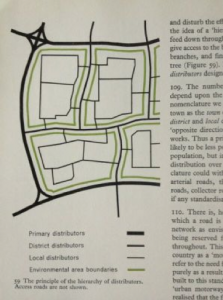We all know Mark from his blog ‘As Easy as Riding a Bike‘ and we appreciated his coming to talk at our meeting.
In explaining the title of his talk, Mark said an alternative is ‘Intrinsic Safety’. The main points are:
- to be able to build into roads of all sizes (shared (access)/ distributers and medium sized roads)
- the biggest problem is the medium size through roads
- the idea applies to all modes
- aim is to prevent crashes or at least to reduce their severity
- the human focus is important (our vulnerability and our behaviour); we make mistakes; it must be possible to absorb errors; the approach should be pervention rather than reactive
Netherlands adopted Sustainable Safety for economic reasons. How successful was it? They have a similar casualty rate but more exposure from children and over 60s who all ride bikes. They have hugely expanded their cycle network
Principles
- mono functionality – i.e single function roads (access/ distributers and medium sized roads)
- homogeneity – mass, speed, dierction. Minimise interactions
- predictability – poor example Midland Road by British Library has 3 motor lanes
- forgiveness
- awareness – allow for the worst
Tasks should be smaller than people’s capabilities.
Monofunctionality
The idea arose from Colin Buchanan’s ‘Traffic in Towns ‘(1963).

Primary Distributers (thick black lines) should not give access to buildings
District distributers. (medium sized roads)
Local distributers – Access roads serve buildings
Unfortunately the UK failed to implement these ideas. Instead, High Streets have become major truck roads. (vehicular urban streets with fumes and noise). From the many quotes from ‘Traffic in Towns ‘ that Mark followed up with, it is sad to think the opportunity we missed in the UK.
The cells have a maximum size to prevent the volume of their own traffic from being too large
e.g. Assen cells are about one mile across.
Large area -> lots of access roads (safe)
CROW (Dutch cycle design manual):
- Recommends large cells of uninterrupted residential areas
- A minimum part of the journey on relatively dangerous roads
Unbundling
- Carry out the classification of roads as one of the three types
- Ensure dense network of cycle routes.
- what not to do – see LCDS Figure 1.3 (shows a blue CS on a major road labelled ‘High Street’)
Mark Treasure’s slides